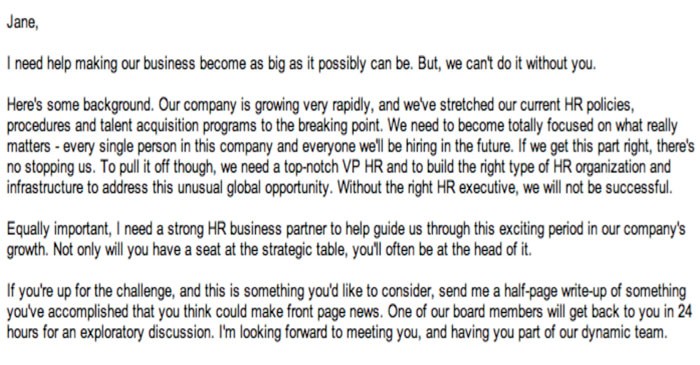Why Job Branding Can Be as (or More) Important Than Employer Branding
I learned about the importance of the employee value proposition (EVP) for attracting people and improving on-the-job performance during my first job almost 50 years ago.
As a newbie systems engineer, I had the privilege to work on a team of about 20 electrical engineers and software developers upgrading the missile guidance system for a major military program. While I thought the work was pretty cool, the more senior engineers found it depressing, dull and worked as few hours as possible to meet minimum standards of performance.
The problem, as I quickly learned, was that these same engineers had just been transferred from the 1969 lunar landing project designing the manned capsule to land on the moon. In that role, doing exactly the same type of work, they told me they worked five years straight with rarely a day off. As they told me these stories their motivation was clear, evident and inspiring.
I quickly learned that for driving motivation and performance, the work itself is often subordinate to the bigger mission, project or company strategy.
As recruiters, it’s essential for us to communicate the EVP to potential candidates in order to hire the right people for the job. And, I want to share with you how to capture the EVP for any job in 140 characters.
Job branding and the EVP: tying the ideal candidate’s intrinsic motivator to a grander purpose
There was an article in last week’s LA Times describing the difficulty major aerospace companies are having attracting top engineering students. Instead, many are heading to Silicon Valley despite their initial desire to work on military and space-related projects.
I contend this problem is primarily due to a lack of a customized EVP that resonates with the target audience. I also contend by capturing the EVP it’s possible to overcome the lack of a well-known employer brand for any job at any company, regardless of size or industry.
To figure this out, we suggest preparing an “ideal” candidate persona as part of the intake meeting. This defines how you’ll find the candidate and what types of messages and media is needed to attract the person. The EVP answers the question, “Why would a top person want this job?” Typically it’s the combination of the candidate’s intrinsic motivation for doing the work tied to some bigger purpose. I call this process job branding. These tweet-sized messages are then sprinkled into every social media marketing campaign.
Here are some actual examples.
- Your attention to detail drives our profitability every day.
- Not only will you have a seat at the strategic table, you’ll often be at the head of it.
- Your organizational skills have made you a legend at our company.
- If you devour Carly Stec’s HubSpot’s marketing blog during breakfast we need to talk.
- This PR release announces your award-winning product design.
- Use your CPA and see the world.
- We have a virgin territory waiting for an account rep to own it.
- Do you think this lean process improvement will work?
- If we can’t give you a 30% growth experience, do not accept our offer.
- Prepare white papers in any color you want.
These were for real jobs and they all worked to increase the response rate regardless of the media, i.e., email, tweet, posting, voice mail, video. The goal of job branding is to capture the person’s attention in some personal and impactful way. This is followed up with a clear call to action (CTA) in the message. Rarely is it to apply directly to the job since most of the people targeted are passive candidates. In these cases it’s imperative that the focus is on establishing an initial dialogue.
To prepare job branded messages, the hiring manager first needs to define the job as a series of 5-6 basic performance objectives. For example, for the CPA job above the major objective was to implement a worldwide financial reporting system for 15 subsidiaries over the course of two years. To determine the employee value proposition (EVP) you need to ask the hiring manager why a top person would want this job and be attracted to it. Often this is a critical skill the person wants to leverage in some way. This is the person’s intrinsic motivator. Job branding is the process of tying the EVP and the work itself to a major project, initiative, mission or strategy.
On a search project a few years ago for a VP HR in a non-ideal location, the intrinsic motivator was having a strategic role in building the entire HR infrastructure for a $400 mm division. The email for this is shown below. You’ll notice the total absence of skills, experience, academics and personality traits. The purpose of the message was only to engage in a conversation.
You don’t need to be a huge company with a well-known employer brand to attract top talent. But you do need to replace skills-based job descriptions with a clear description of the actual job and how this impacts the company in some important way. Then you need to shrink this package into 140 character zingers. Job branding this way is a difference maker and it will make a bigger difference in the people you attract and those you hire.
*Image from Mad Men
To receive blog posts like this one straight in your inbox, subscribe to the blog newsletter.
Topics: Job descriptions
Related articles





